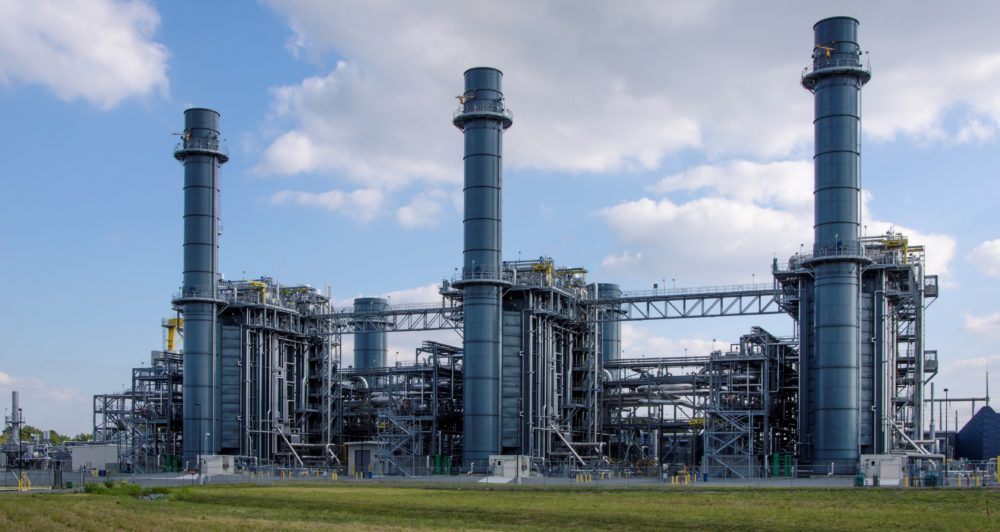Many U.S. electric utilities are doubling down on natural gas to generate power as they retire aging and polluting coal plants. While this unprecedented shift does provides some near-term benefits, dramatically expanding our use of natural gas to generate electricity is an ill-advised gamble that poses complex economic, public health, and climate risks.
The Natural Gas Gamble, a new UCS analysis, shows that a far better bet for achieving a clean energy future is to greatly expand the use of renewable energy and energy efficiency. By choosing this pathway and avoiding an overreliance on natural gas, we can ensure a more consumer-friendly, resilient, and diversified electricity system, while also delivering cost-effective carbon dioxide (CO2) emissions reductions and improved public health.
Rewards and risks of the natural gas surge
Recent increases in domestic supplies of natural gas and resulting low prices have impelled utilities and power producers across the country to become more greatly dependent on natural gas. And the transition toward greater use of natural gas has been particularly dramatic in a number of states. Florida, for instance, the third-largest electricity producer in the United States, now generates 62 percent of its electricity from natural gas—up from 44 percent just a few years ago. All told, 16 states generated more than one-third of their electricity from natural gas in 2013, with several of these states now using natural gas to generate nearly two-thirds or more of their electricity.

Credit: Duke-Energy/Creative-Commons (Flickr)
The burning of natural gas instead of coal to generate electricity does offer important and immediate benefits, including reduced air and water pollutants, fewer smokestack carbon emissions, less power plant water use, greater flexibility of the power grid, and an economic boost to some regions of the country.
But these rewards must be carefully weighed against the risks of natural gas as the electricity sector’s new primary fuel of choice. Central among them is historical and ongoing natural gas price volatility, which can lead to higher electricity prices. Price spikes not only harm consumers and the economy, but can also create perverse incentives for utilities to switch back to using old and polluting coal plants.
In addition, while natural gas plants’ smokestack emissions are significantly cleaner than those of coal plants, natural gas is still a fossil fuel that contributes to climate change when combusted. Even more concerning is that the extraction, distribution, and combustion of natural gas results in the leakage of methane, a powerful global warming gas 34 times stronger than carbon dioxide at trapping heat over a 100-year period. Methane leakage diminishes the climate advantages of natural gas over coal. Natural gas extraction and transport also threaten to degrade local land, air, and water resources and raise legitimate public health and safety concerns.
Our analysis found that staying on our current electric sector trajectory would put the United States on a pathway of greater natural gas use, rising carbon emissions, and higher natural gas and electricity prices. In a Business-as-Usual scenario, we found that total natural gas use will increase by nearly 18 percent between 2013 and 2040, with the power sector representing the largest share of this increase at 49 percent. Additionally, natural gas prices would be 2.3 times higher for the power sector in 2040 than in 2013, and average consumer natural gas prices would nearly double over the same time period. This is clearly the wrong path for the United States.
Investing in renewable energy and energy efficiency is a better path forward
Where natural gas consistently comes up short, renewable energy and energy efficiency delivers. These technologies are already ramping up quickly across the country and demonstrating that they can supply affordable, reliable, and low-carbon power.
Rather than making a wholesale switch to natural gas, our research shows that investing more heavily in renewable energy and energy efficiency offers a smarter, faster, and less risky means of achieving a more affordable, reliable, and diversified electricity system that delivers not just short-term economic and environmental gains but also long-term reduction of emissions causing climate change.
Using the Energy Information Administration’s National Energy Modeling System, we analyzed the effects of climate and clean energy policy scenarios on the electricity sector, consumers, the economy, and carbon emissions. In our core policy scenario, we examined the effects of a federal carbon emissions reduction standard on the power sector complemented by a suite of federal renewable energy and energy efficiency policies.
Pursuing this strategy could cut power plant carbon emissions 55 percent below 2005 levels by 2025 and 70 percent by 2040 (Figure 1). In fact, investing in greater amounts of renewables and efficiency would deliver an additional 6.8 billion metric tons of carbon dioxide emission reductions cumulatively by 2040 than by implementing a carbon standard alone. These cumulative additional emissions savings are more than 3.3 times larger than the total power sector carbon emissions in 2013.

Figure 1. U.S. Power Plant CO2 Emissions. Because CO2 persists in the atmosphere, we must lower CO2 emissions as quickly as feasible to limit climate risks. Implementing a combination of policies, including a carbon standard and strong renewables and energy efficiency policies, could cut power plant carbon emissions 55 percent below 2005 levels by 2025 and 70 percent by 2040 (dark green line). A carbon standard alone (light green line) would lead to lesser reductions, and they would occur later than with this combination of policies. The shaded area between these two lines represents additional cumulative emissions of 6.8 billion metric tons of CO2 that would result from this delay. Without any new policies, emissions will continue to grow, increasing 12 percent above 2013 levels and nearly reaching 2005 levels by 2040 (red line).
This would not only be a meaningful contribution toward a global effort to help limit some of the worst consequences of climate change; it can be done cost-effectively while providing substantial societal benefits. In 2020, the net societal benefits (e.g. improved public health, reduced environmental impacts) of pursuing these reductions in carbon emissions and other harmful pollutants are 2.6 times greater than the consumer compliance costs, or nearly $36 billion. By 2040, the benefits grow to nearly $170 billion (Figure 2).

Figure 2. Benefits and Costs of Policies That Limit Carbon Emissions, relative to Business as Usual Scenario. the benefits of transitioning to cleaner power clearly outweigh the costs. “Compliance costs” are the incremental costs of deploying a cleaner generation mix in our Carbon Standard plus Renewables and Efficiency Policies Scenario relative to costs included in our Business as Usual Scenario. “Benefits” are the monetized damages avoided by reducing emissions of carbon dioxide (CO2), sulfur dioxide (SO2), and nitrogen oxides (NOx).
Implementing a carbon standard along with renewable energy and energy efficiency policies also results in long-term savings on consumer energy bills as it cuts carbon emissions and raises carbon revenues. Investments in renewables and efficiency and higher natural gas prices, caused in part by fuel switching to replace power from some coal plant retirements, result in net costs of $19 billion in 2020. However, consumers would see annual net savings of $40 billion by 2030, rising to $59 billion by 2040.
Furthermore, increasing the share of renewable energy and energy efficiency is an important way to hedge against economic risks in a future including uncertain natural gas prices. For example, our core policy case results in a total electricity resource mix portfolio that is 14 percent less sensitive to long-term fluctuations in fossil fuel prices.
Choosing a truly clean energy future
The choice is clear. As the nation moves away from coal, setting course toward a diverse supply of low-carbon power sources—made up primarily of renewable energy and energy efficiency—is far preferable to a wholesale switch to natural gas. For its part, natural gas could still play a useful—but more limited—role in the transition to a clean energy system, not as a replacement for coal but rather as an enabler of grid flexibility in support of renewable technologies.
To accelerate and maximize the use of renewable energy and efficiency in this transition will require stronger climate and clean energy policies nationwide, as well as appropriate planning and decision making by regulators, grid operators, utility companies, and power producers. By making smart energy choices today, we can transition to a more consumer-friendly and resilient electricity system, achieve cost-effective carbon dioxide emissions reductions, and face fewer risks stemming from an overreliance on natural gas.
That’s a bet you can bank on.
